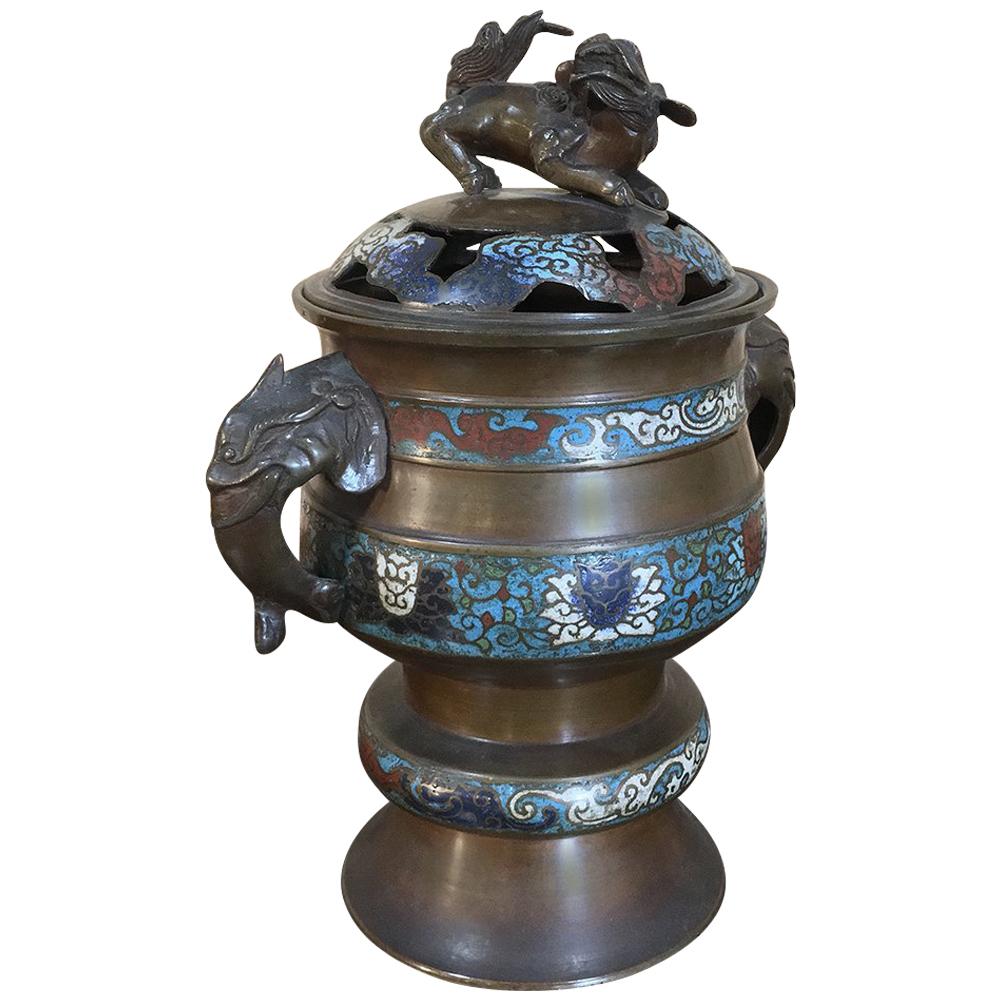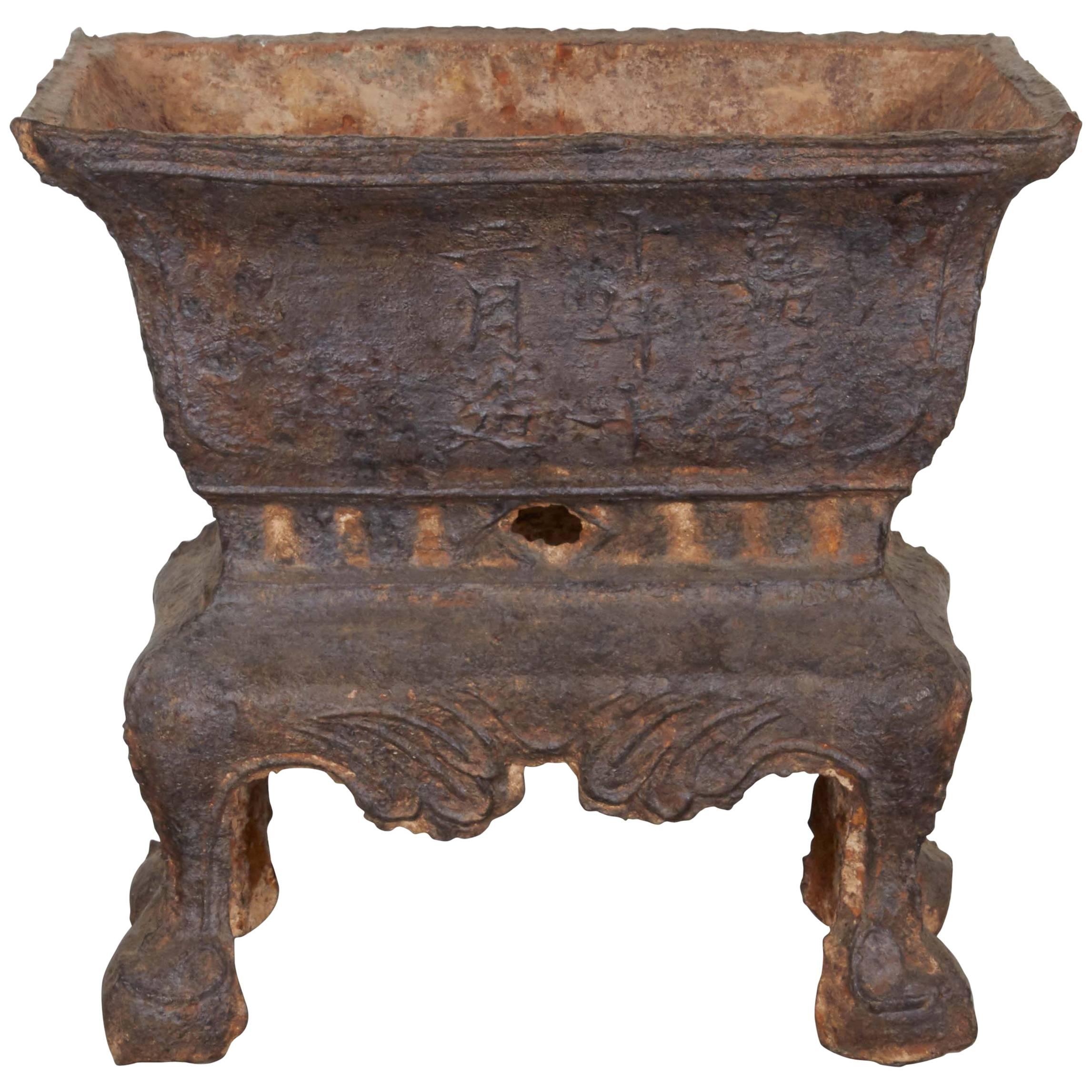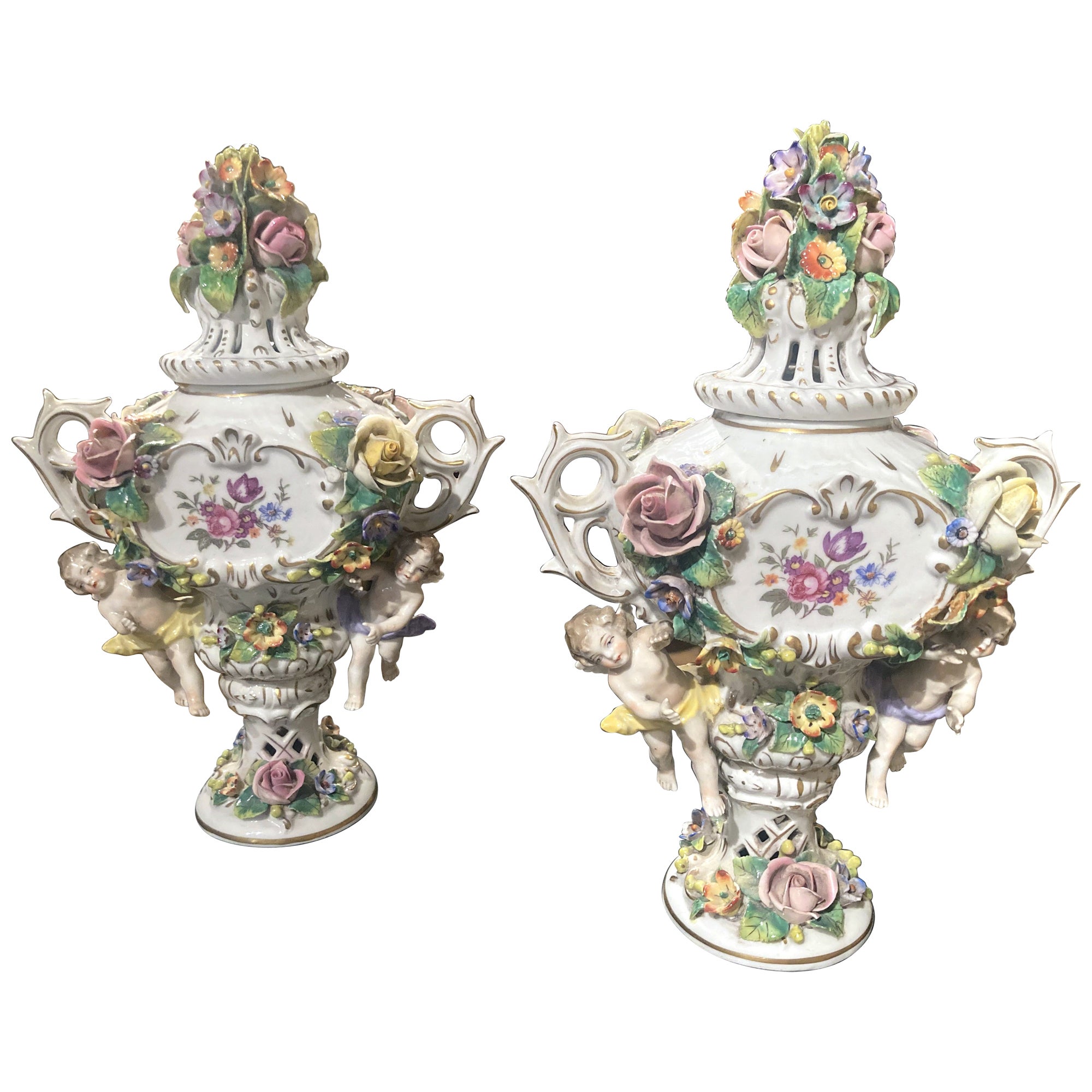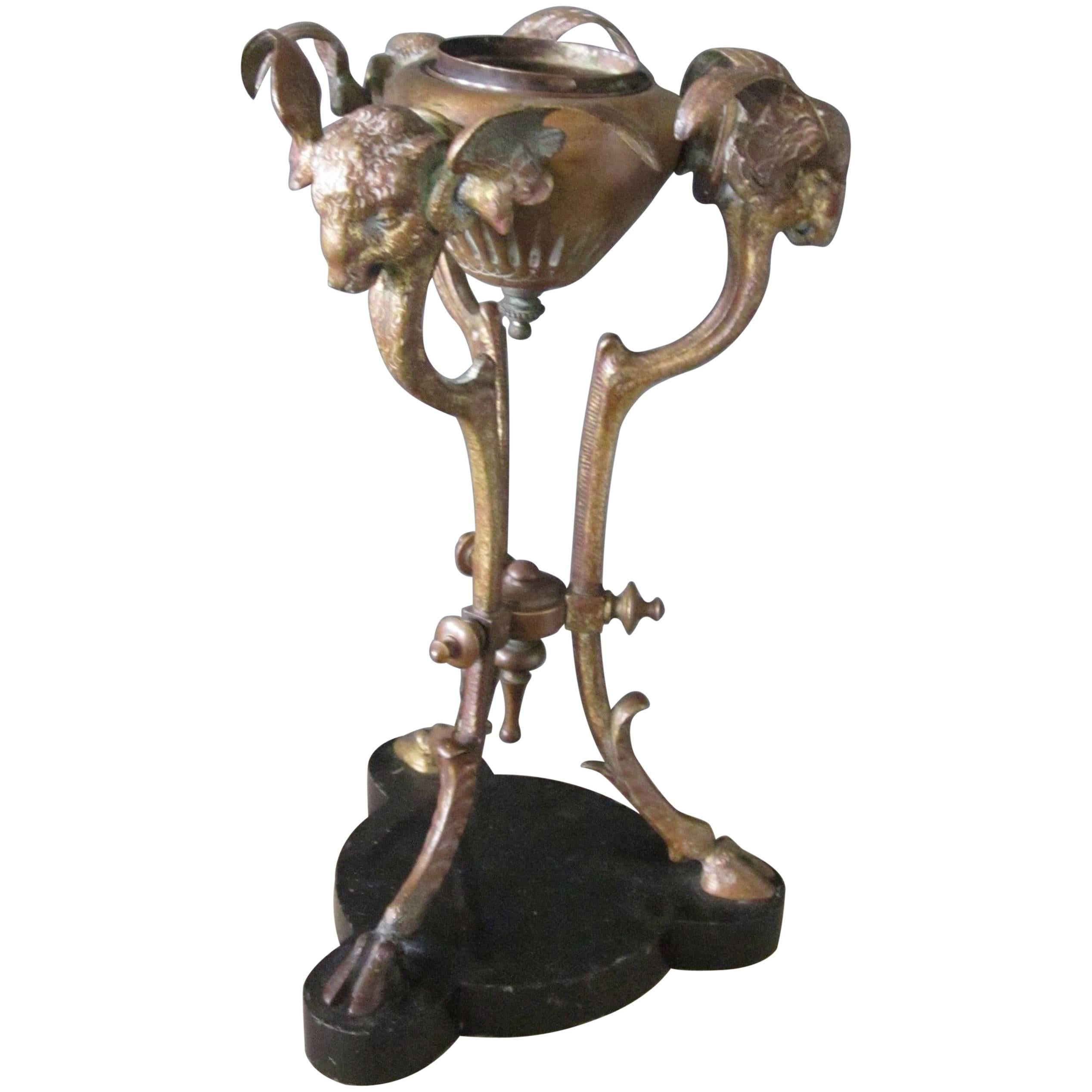Items Similar to Incense Burner, Japan, 19th Century
Want more images or videos?
Request additional images or videos from the seller
1 of 14
Incense Burner, Japan, 19th Century
About the Item
Beautiful incense burner in the shape of a straw basket with a praying mantis sitting on top. Bronze, Japan 19th century.
Good condition, oxidation, one leg missing from the praying mantis.
Dimensions in cm ( H x L x l ) : 26 x 14.5 x 11.5
Secure shipping.
- Dimensions:Height: 10.24 in (26 cm)Width: 5.71 in (14.5 cm)Depth: 4.53 in (11.5 cm)
- Style:Meiji (Of the Period)
- Materials and Techniques:
- Place of Origin:
- Period:
- Date of Manufacture:1900
- Condition:Wear consistent with age and use. Minor structural damages.
- Seller Location:PARIS, FR
- Reference Number:1stDibs: LU8131233011822
About the Seller
5.0
Vetted Seller
These experienced sellers undergo a comprehensive evaluation by our team of in-house experts.
Established in 2020
1stDibs seller since 2023
10 sales on 1stDibs
Typical response time: <1 hour
- ShippingRetrieving quote...Ships From: PARIS, France
- Return PolicyThis item cannot be returned.
More From This SellerView All
- Attributed, Val St-Lambert, Empire Style Vase, 19th CenturyBy Val Saint LambertLocated in PARIS, FRSuperb and large empire style vase attributed to the Val Saint Lambert manufacture, 19th century Belgium. Openwork of gilt bronze in arches and wreat...Category
Antique Mid-19th Century Belgian Empire Vases
MaterialsCrystal, Bronze
- Nô Theatre Dancers, 19th Century Meiji Period Japanese Okimono SculptureBy HozanLocated in PARIS, FRTwo superb Nô theatre dancers in carved wood and bone by the artist Hōzan 芳山, Japan late 19th century. Decorations of a fox on the head of one dancer and carved dragons, chrysanthe...Category
Antique 19th Century Japanese Meiji Figurative Sculptures
MaterialsBone, Wood
- Japanese Silver Inlay Samuraï and Dragon Vase, Japan, 18th-19th CenturyLocated in PARIS, FRBeautiful and rare Japanese vase from the 18th/19th century. Superb silver inlay work showcasing a Samuraï fighting off a dragon snake with an additional dragon on top of the lid. Additional detailed decorations of chrysanthemums and lily motifs. This vase was part of the collection of Marechal Niel...Category
Antique Late 18th Century Japanese Antiquities
MaterialsSilver, Bronze
- Monk Head Bamboo and Glass Sculpture, Japan 19th Century, Edo PeriodLocated in PARIS, FRSuperb bamboo sculpture with glass eyes of a Japanese monk. Japan, 19th century, Edo period. In good condition. Slight wear and small dent seen in photos. Dimensions in cm (H x L x...Category
Antique Early 19th Century Edo Busts
MaterialsBamboo, Glass
- Oman, Necklace, 19th CenturyLocated in PARIS, FRStunning and rare Omani tribal necklace in gold and silver featuring eight Burgau thalers dated 1780. 19th century. Very good condition. Preserved and professionally framed. Dimensions of the necklace: 52 x 30 x 3 Dimensions of the frame: 70 x 47 x 5 Secure shipping. This fine Omani necklace of silver and gold comprises two strands of spiky, seed pod-like silver beads; gold-wrapped beads; eight silver Maria Theresa thaler coins; and a large silver and gold amulet box, with multiple chain tassels each of which finishes with a square-shaped pendant cut from sheet silver. The cigar-shaped amulet box called hirz would have contained some Koranic verse or religious text. Such a spectacular display of wealth would only have been worn at times of important festivities such as marriage celebrations. Maria Theresa thalers were made in Austria since the reign of Empress Maria Theresa of the Austro-Hungarian Empire. The Empress died in 1780 and since that time, all thalers that were subsequently struck were minted with that date regardless of the actual year that they were produced. The coins achieved such a level of trust for their silver content (which is 83.3% silver) in the Middle East that neither the design not the date was varied, and so for more than 200 years the coins were used as an international currency among the tribes and the states of the Middle East, in much the same way as the Spanish dollar was used as an international currency at the time elsewhere. The thalers were used to complete most important transactions locally and were also given as dowries. They were also an important source of silver and were melted locally for jewellery. The coins made their way to the ports of the Red Sea, Egypt and northern Africa from the ports of Genoa, Trieste, Livorno and Marseille. European traders used the coins to buy precious materials from the Gulf and northern Africa which it desired – commodities such as spices, coffee, gum Arabic, indigo, pearls, and tortoise shell. The importance and the beauty of the coins saw them incorporated into local jewellery most particularly in Oman and Yemen. References Al-Jadir, S., Arab & Islamic Silver, Stacey International, 1981. Harrigan, P., ‘Tales of a Thaler’, Saudi Aramco World, January/February 2003. Hawley, R., Omani Silver, Longman, 1978. Hawley, R., Silver: The Traditional Art of Oman, Stacey International, 2000. Rajab, J.S., Silver Jewellery of Oman, Tareq Rajab Museum, 1998. Ransom, M., Silver Treasures from the Land of Sheba: Regional Yemeni Jewelry...Category
Antique 19th Century Omani Tribal Art
MaterialsGold, Silver
- Gustave Tiffoche, Tulip Vase, France, Late 20th CenturyBy Gustave TiffocheLocated in PARIS, FRSuperb Gustave Tiffoche ceramic stoneware tulip vase. Freeform decorations punctuated by colourful hues of blues, browns and whites. Dimensions in cm ( H x D ) : 28 x 12 In excellent condition. Secure shipping. Gustave Tiffoche is one of the great French stoneware artists of the late 20th century. He started his earthenware works at the age of 33. "In 1961, Tiffoche made his first approach to pottery at Norbert Pierlot, in Ratilly. That year the gallery of the Castle exposes the great names of the ceramics world: Bernard Leach, Shoji Hamada, Raîja Tuumi, A.Cumella, Daniel de Montmollin, Georges Jouve, M. and Y. Mohy, Jean and Jacqueline Lerat, De Vinck. He met and became friends with several of them along the way. Two years later, he set up his workshop in Guérande. He began to produce unique pieces in parallel with a production of utilitarian pieces and built his first wood-fired kiln in 1963. In 1966, he participated for the first time in a ceramics exhibition at the Hôtel de Sens in Paris, then at the Maison de la Culture in Caen, "Les Potiers contemporains". He organized his first personal exhibition of ceramics in 1968 at the "Michel Columb" gallery of Marie-Jo Marot in Nantes. On the walls, the paintings are of Gaston Chaissac. Exhibits came one after another afterwards, throughout France and abroad: Stuttgart in 1969, Montreal in 1970, Munich in 1971, Faienza in 1972, Dakar in 1984 and Sarrelouis in 1994. At the same time, regular exhibitions at the "convergence" gallery in Nantes allow the artist to continue his artistic evolution and questioning. He created a monumental ceramic fountain for the IUT in Saint-Nazaire in 1981. Other monumental works in stoneware will follow in La Roche-sur-Yon, Niort, Melle, Rennes, Bouaye, IRESTE of Nantes. Between 1970 and 1985, many young ceramists came to learn or perfect their Craft, or collaborated directly with him by working in his workshop. Among them, of note: Jorgen Hansen...Category
Vintage 1970s French Mid-Century Modern Vases
MaterialsCeramic
You May Also Like
- Large Japanese Bronze Koro Incense Burner, Meiji Period, 19th Century, JapanLocated in Austin, TXA large and fantastic Japanese cast bronze incense burner, koro, with high relief design, Meiji period, late 19th century, Japan. The large and tall koro cast in extremely high re...Category
Antique Late 19th Century Japanese Meiji Metalwork
MaterialsBronze
- 19th Century Asian Cloisonné Incense BurnerLocated in Dallas, TXThis 19th Century Asian Cloisonne Incense Burner is a wonderful decorative accent from a bygone era ~ that still works! The process to create...Category
Antique Late 19th Century Chinese Chinoiserie Urns
MaterialsBronze, Enamel
- Early 19th Century Cast Iron Incense BurnerLocated in New York, NYA large and exquisitely detailed early 19th century cast iron incense burner raised on four graceful legs with clear Chinese characters. From Shanx...Category
Antique Early 19th Century Chinese Urns
MaterialsIron
- Chinese Qing Dynasty Green Glazed Incense Burner, Late 19th CenturyLocated in Austin, TXA charming Chinese green glazed pottery censer or incense burner, Qing Dynasty, late 19th century. Now suitable for use as a jardiniere or vase. The incense burner in glazed a deep green, in imitation of bronze models, and set on four tapered legs attached to a rectangular stand...Category
Antique Late 19th Century Chinese Qing Planters, Cachepots and Jardinières
MaterialsPottery
- 19th Century Capodimonte Polychrome Porcelain Incense Burners Vases with FlowersBy CapodimonteLocated in Firenze, ITAn exquisite pair of early 19th century Italian Capodimonte Rocococ style polychrome porcelain incense burners in the form of urn shaped vases with two handles and pierced lids. The...Category
Antique 19th Century Italian Rococo Vases
MaterialsPorcelain
- Incense Burner, France, 19th CenturyLocated in New York, NYInteresting ram's head and hoof design on this brass incense burner with stone base.Category
Antique 19th Century French More Furniture and Collectibles
MaterialsBrass
Recently Viewed
View AllMore Ways To Browse
Japaneses Vessel
Japanese Vase 19th Century
Japanes Vase 19th Century
Japan Vase Mid Century
Japanese Mid Century Vase
Midcentury Japanese Vase
Mid Century Japan Vessel
Incense Burner
Incense Burners
Incense Incense Burner
Basket On Legs
Leg Vessel
Japanese Mid Century Vases And Vessels
1900 Japanese Vase
19th Century Japanese Bronze Vases
Vessel With Legs
Antique Japanese Vase Shapes
Japanese Urn





